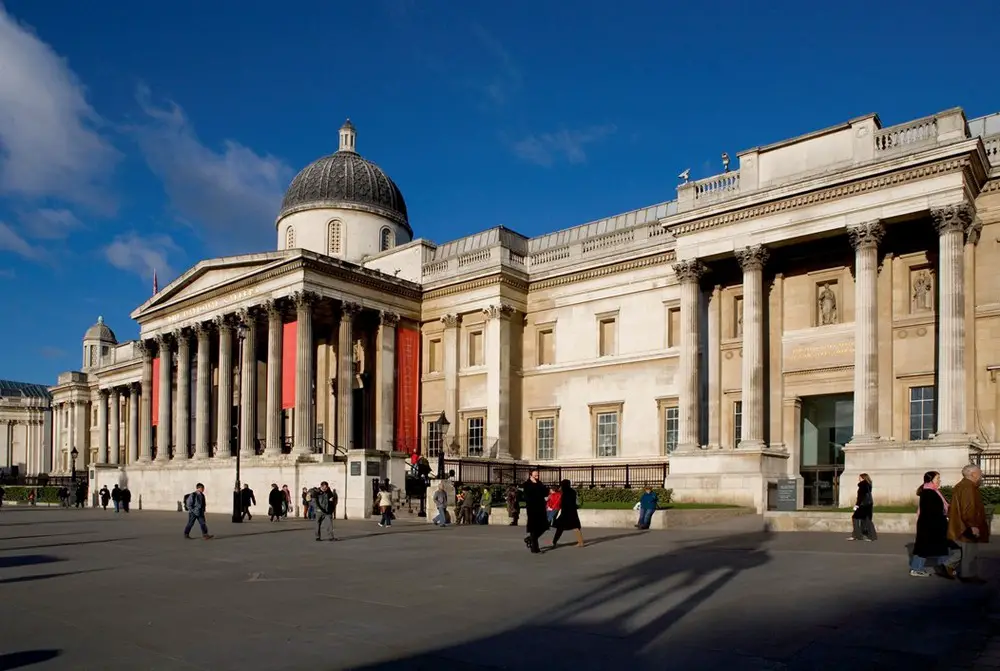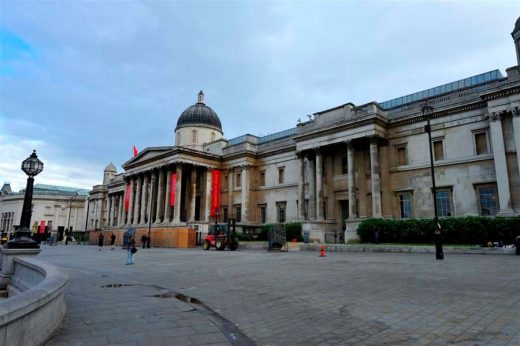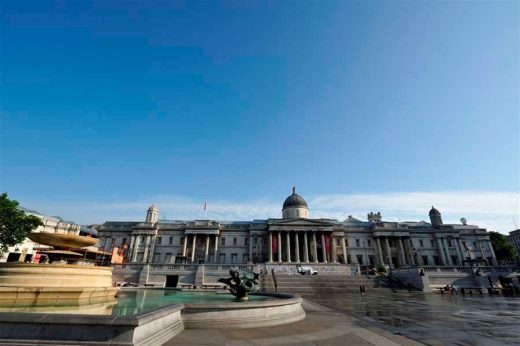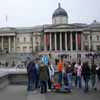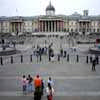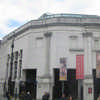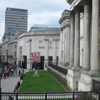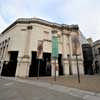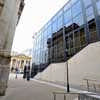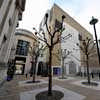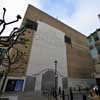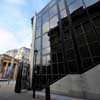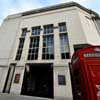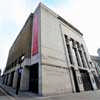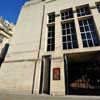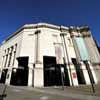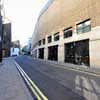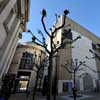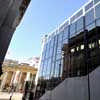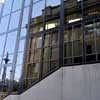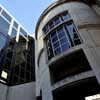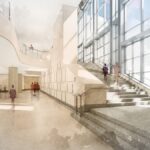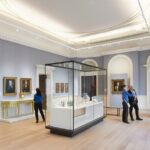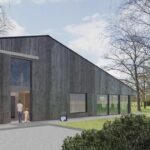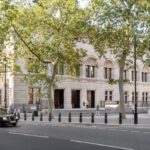National Gallery London, Sainsbury Wing, Architect, Images, NG200, Date, Extension Design, Photos
National Gallery London Architecture
Key Public Building in Trafalgar Square, England, UK Built Environment News
18 Feb 2022
The National Gallery Reveals Initial Proposals For NG200 Project As Public Consultation Starts
National Gallery London NG200 Project
14 July 2021
National Gallery Building London Renewal Winner
Selldorf Architects win the NG200 Project at The National Gallery
The National Gallery has today (14th of July 2021) announced that a team led by Selldorf Architects has been selected to work on a suite of capital projects to mark its Bicentenary, with an initial phase to be completed in 2024.
Selldorf Architects’ team also includes Purcell, Vogt Landscape, Arup, AEA Consulting, Pentagram, Kaizen and Kendrick Hobbs.
Annabelle Selldorf, founding Principal of Selldorf Architects, USA:
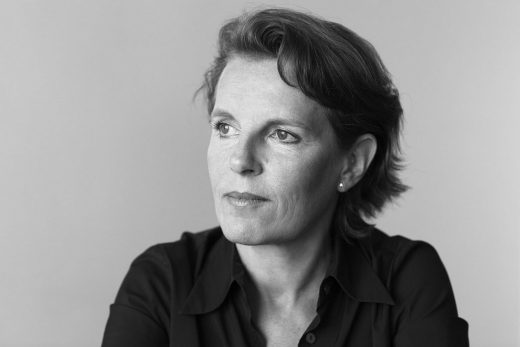
photo © Brigitte Lacombe
Based in New York, Selldorf Architects has considerable experience within the arts and culture sector across the UK, Europe, and the US. It counts among its current and previous clients: The Frick Collection, Luma Arles, the Museum of Contemporary Art San Diego, the Smithsonian American Art Museum, Neue Galerie New York, the Clark Art Institute, David Zwirner, Hauser & Wirth, Frieze Masters, and the Venice Art Biennale.
The Selldorf Architects-led team will work with the National Gallery to complete the initial phase of works to its Trafalgar Square buildings to greatly improve the ‘welcome’ it provides to the millions of visitors it receives each year. This will include remodelling parts of the Sainsbury Wing and the public realm, and the provision of a new Research Centre. These sensitive interventions will be pivotal in reshaping the National Gallery for its third century and the next generation of visitors.
Over the coming months, the approach submitted by Selldorf Architects’ team will be refined into a comprehensive brief alongside the National Gallery team, and extensive engagement and liaison with external stakeholders will begin.
Underpinning the brief is the desire to create healthy, sustainable, and accessible spaces and an environment that is open and inclusive where visitors can feel welcome and reflect as they plan their visit to one of the world’s finest art collections. Following a year of unprecedented challenges due to Covid-19, the National Gallery wants to build on its strength, inventiveness, and relevance to play a vital role in the nation’s recovery story.
A major part of the National Gallery’s Bicentenary celebrations will be a programme of inspirational exhibitions and outreach around the country and around the world, under the banner NG200. The National Gallery plans to engage the whole of the UK with the Gallery’s collection, demonstrating itself as a national institution at the heart of national life. An extensive programme of digital engagement will also be leveraged to extend and redefine the Gallery’s influence as a global digital institution.
Commenting on the appointment of Selldorf Architects, Director of the National Gallery, Dr Gabriele Finaldi said:
‘We are delighted to appoint Selldorf Architects as the design-team partner for NG200. Throughout the selection process, Selldorf Architects demonstrated a real understanding of our ambitions as well as sensitivity to the heritage of our existing buildings. However, the talent and tenacity demonstrated at all levels by each of the six shortlisted teams was remarkable. I would like to thank all those involved, particularly the judging panel who have guided us through the selection process.
The capital projects form the first stage of our Bicentenary celebrations and are essential in building the foundations of the Gallery’s future. Working alongside Selldorf Architects, we will develop and deliver a detailed brief that will be the framework through which we consolidate our role as the nation’s gallery.
The next five years will be pivotal in fighting our way out of the crisis of Covid-19. We recognise the catastrophic impact this has had on so many, and particularly on arts and culture institutions’ visitor numbers. It will take time for these to return to 2019 levels, but there is hope on the horizon and arts and culture will be crucial in the healing of our country. We plan to build on our strengths, respond to challenges and opportunities, and forge a pathway to the National Gallery of the future – for the nation and for the world.
Our Bicentenary in 2024 is a key moment in this creation of the new National Gallery. We will demonstrate the values we hold, and the value we create as we enter our third century with renewed and bold ambition, and perhaps most importantly – hope.’
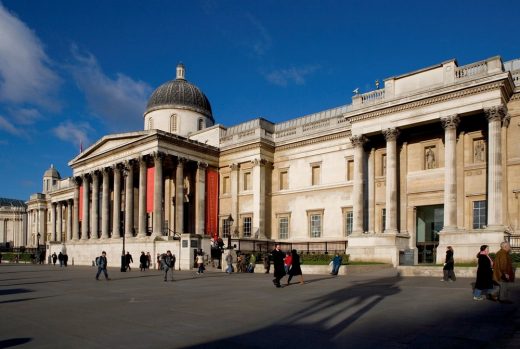
photo courtesy of the National Gallery
Annabelle Selldorf, founding Principal of Selldorf Architects, added:
‘It is an honour to be appointed to work alongside the National Gallery on its NG200 project. This is a significant opportunity for an iconic cultural institution to reflect on its ambitions for the future and drive forwards an innovative, bespoke brief that befits its many visitors. The National Gallery is home to one of the most exceptional collections of art in the world and has often led the way for other institutions globally.
Our team will work sensitively and thoughtfully with the National Gallery, guided by its vision for a Gallery of the future that is inspiring, sustainable, and truly inclusive.’
The selection process was run under the Competitive Procedure with Negotiation in accordance with UK procurement regulations by Malcolm Reading Consultants. The five other shortlisted teams were led by: Asif Khan, Caruso St John Architects, David Chipperfield Architects, David Kohn Architects, and Witherford Watson Mann Architects.
In addition to the Executive team and Trustees of the National Gallery, several independent panellists were appointed to the judging panel to select an architect-led design team. These were: Edwin Heathcote, architecture critic and author; leading structural engineer Jane Wernick CBE FREng; and Ben Bolgar, Senior Design Director for the Prince’s Foundation.
Selldorf Architects, New York City
Previously on e-architect:
8 Apr 2021
National Gallery Building London Renewal Shortlist
The National Gallery Announces Six Shortlisted Design Teams For Its NG 200 Plans
The National Gallery has today (8 April 2021) announced six shortlisted design teams in its search for a partner to work with it on a suite of capital projects to mark its Bicentenary. An initial phase of work will be completed in 2024, to mark the Gallery’s 200th year.
The shortlisted teams are:
- Asif Khan with AKT II, Atelier Ten, Bureau Veritas, Donald Insall Associates, Donald Hyslop, Gillespies, Joseph Henry, Kenya Hara, and Plan A Consultants
- Caruso St John Architects with Arup, Alan Baxter, muf architecture/art and Alliance CDM
- David Chipperfield Architects with Publica, Expedition, Atelier Ten, iM2 and Plan A Consultants
- David Kohn Architects with Max Fordham, Price & Myers, Purcell and Todd Longstaffe‐Gowan
- Selldorf Architects with Purcell, Vogt Landscape Architects, Arup and AEA Consulting
- Witherford Watson Mann Architects with Price and Myers, Max Fordham, Grant Associates, Purcell and David Eagle Ltd
The shortlist has been drawn from an impressive pool of submissions from highly talented UK and international architect-led teams. In addition to members of the executive team and Trustees of the National Gallery, several independent panellists are advising on the selection process, which is being run by Malcolm Reading Consultants. These are Edwin Heathcote, Architecture Critic and Author: leading structural engineer Jane Wernick CBE FREng: and Ben Bolgar, Senior Design Director for the Prince’s Foundation. The extremely high quality of the submissions led the panel to increase the number of design teams shortlisted from the originally envisaged five, to six.
Following an open call launched in February 2021, the next steps will require the shortlisted teams to submit an initial tender, attend negotiation workshops, submit a final tender and then be interviewed by the selection panel. No design work will be required, and some expenses will be paid to the shortlisted teams. An appointment is expected to be made in July 2021.
Commenting on the announcement of the shortlisted teams, Director of the National Gallery, Dr Gabriele Finaldi said: ‘We were impressed and delighted with the high quality of the submissions we received. It was not an easy task to reach the shortlist, but we are confident that we have chosen six teams that will produce a range of different approaches to excite and inspire us.
This is a significant moment in the development of the National Gallery as we look forward to the recovery of our arts and cultural institutions, our city and our country. It is important that we choose a team who we can work with collaboratively and that shares our vision for the future. I’m looking forward to the next phase of the selection process.’
Paul Gray, Chief Operating Officer of the National Gallery, added: ‘We thank everyone who submitted for the NG200 Project. From these six shortlisted teams, we are looking for demonstrable and exceptional design talent as well as the creativity to respond sensitively to the heritage and context of the Sainsbury Wing. We have identified teams that we know will offer exciting and inspiring visions, and we look forward to working with the winning team to unlock the potential of the spaces within the Sainsbury Wing and the public realm.’
NG200 will celebrate 200 years since the National Gallery’s foundation in 1824, programming a series of inspirational exhibitions and outreach around the country and around the world. The celebration will also include the completion of an initial phase of works to its Trafalgar Square buildings to improve the ‘welcome’ it provides to the millions of visitors it receives each year.
The brief for the project includes sensitive interventions to the Grade I listed Sainsbury Wing to reconfigure the ground- floor entrance and upgrade the visitor amenities, creating new spaces that will provide a welcome experience befitting a world-class institution and that meets the expectations of 21st-century visitors.
A new Research Centre will support the Gallery’s vision of becoming a world leader in research into historic painting, and communicate the Gallery’s work as a global thought leader by creating a powerful resource for studies into art history, digital humanities, conservation, and heritage science. It will be a resource for everyone interested in studying art, from students to international academics.
The successful team will also be asked to reimagine the public realm immediately outside the Sainsbury Wing and along the northern edge of Trafalgar Square to improve the presence of the building in its context and create a more attractive and enjoyable setting for visitors and the public.
Underpinning the brief is the desire to create healthy, sustainable, and accessible spaces and an environment that is open and inclusive where visitors can relax as they plan their visit to one of the world’s finest art collections. Following a year of unprecedented challenges due to Covid-19, the National Gallery wants to build on its strength, inventiveness, and relevance to play a vital role in the nation’s recovery story.
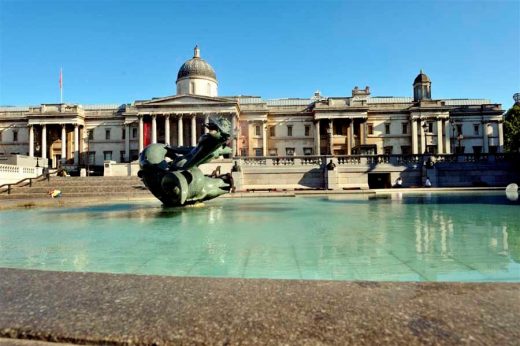
photograph © Nick Weall for e-architect
National Gallery Building London Renewal Shortlisted Teams
Information on shortlisted teams
We have assembled a highly experienced team of innovators, experts, and dear friends of the National Gallery to collaborate and deliver a new beginning for this sensitive site on its 200th Birthday.
Our team is led by Asif Khan Ltd., the award-winning London architecture office who have been working on the Museum of London and Dubai Expo public realm for the past four years; globally renowned graphic designer and visual communicator Kenya Hara; award‐winning structural engineers AKTII; innovative environmental engineers Atelier 10; landscape architects Gillespies; historic building architects Donald Insall Associates; and courageous urban practitioners Joseph Henry and Donald Hyslop.
We sincerely believe that our team will bring the exact mix of diversity, respect and freshness that this old friend needs to help it into the next century.
Caruso St John Architects with Arup, Alan Baxter, muf architecture/art and Alliance CDM
Since its foundation in 1990, Caruso St John Architects has been pursuing an architecture that is rooted in place. The practice resists the thin‐skinned abstraction that characterises much global architecture in favour of buildings that are perceived slowly over time and that have an emotional content. Its work is enriched by an ongoing dialogue with the European city and with history —that of architecture, art, and culture more widely. Caruso St John’s approach brings an intensity to the built work and ensures the rigorous construction quality for which the practice is renowned. The result is an architecture that is considered, meaningful and enduring.
David Chipperfield with Publica, Expedition, Atelier Ten, iM2 and Plan A Consultants
David Chipperfield Architects (DCA) has brought together an experienced and award‐winning London‐based team with the collective expertise to meet the ambitions and specific challenges of the NG200 Project. Led by architects and heritage experts DCA, the team includes urban design and public realm specialists Publica; Expedition and Atelier Ten structural and services engineers; Principal Designer iM2; and Plan A design managers. The team shares a common spirit of partnership, collaboration, and design excellence.
Over the last 35 years DCA has been widely celebrated for its cultural projects such as Museo Jumex in Mexico City and James‐Simon‐Galerie in Berlin as well as its sensitive work with historic and listed buildings, including masterplans for Museum Island in Berlin and the Royal Academy of Arts in London. The practice has a proven track record with the restoration and re‐use of modern landmarks such as Mies van der Rohe’s Neue Nationalgalerie.
David Kohn Architects has a reputation for arts and education projects. Gallery projects have included the V&A Photography Centre, refurbishment of the ICA, a restaurant for the Royal Academy, and spaces for Sotheby’s and Christie’s. Collaborations with artists have included A Room for London with Fiona Banner RA, The Salvator Mundi Experience with Simon Fujiwara and Ickworth House with Pablo Bronstein.
The practice is currently working on new campuses for New College Oxford and the University of Hasselt, Belgium, and new market halls for Birmingham City. The proposed team are successfully collaborating on these projects but also bring skills specific to the NG200 Project. In particular, Purcell has worked with the National Gallery for 30 years and have an unrivalled knowledge of the estate. David Kohn has recently written about Robert Venturi and Denise Scott Brown and their influence on his practice, in the Architectural Design special issue, Multiform.
Selldorf Architects with Purcell, Vogt Landscape Architects, Arup and AEA Consulting
The team of Selldorf Architects, Purcell, Vogt, Arup and AEA bring extensive experience in the sensitive updating of museums and other historically significant buildings in important public contexts. Lead designer Selldorf Architects is currently working on the $160 million expansion and renovation of The Frick Collection in New York City and the Museum of Contemporary Art San Diego.
Founded in 1947, Purcell is the largest UK practice working in the field of historic buildings. Vogt was the designer for the public realm of Tate Modern and is one of the leading voices in landscape architecture today. Arup is unparalleled in their technical creativity and were the original Structure and MEP engineers of the Sainsbury Wing. AEA Consulting is a global firm setting the standard in strategy and planning for cultural and creative industries. The team is committed to world‐class, place‐making architecture and urban design that is sustainable and future‐forward.
Witherford Watson Mann Architects + Price and Myers + Max Fordham + Grant Associates + Purcell + David Eagle Ltd
Witherford Watson Mann Architects are specialists in the transformation of cultural heritage. RIBA Stirling Prize winners in 2013 and shortlisted for the award in 2019 for their work at Astley Castle and Nevill Holt Opera, their designs for the Grade I listed Courtauld Institute of Art at Somerset House and Clare College, Cambridge are currently under construction.
Their team includes Price & Myers, structural engineers and Max Fordham, services engineers, longstanding collaborators of the practice and substantial contributors to their award‐winning projects; Grant Associates, landscape architects whose work ranges from the discreet urban landscape at Accordia, Cambridge to the flamboyant Gardens by the Bay in Singapore; Purcell, deeply experienced in the field of historic buildings, who have delivered sensitive and creative projects for the National Gallery, the British Museum, and the V&A; and by David Eagle, CDM advisor amongst others to Argent at Kings Cross and Woolwich Creative District.
National Gallery Building London Renewal Competition Jury
Selection Panel
The selection panel is comprised of:
- Dr Gabriele Finaldi, Director, The National Gallery
- Lord Hall of Birkenhead CBE, Chair of Trustees, The National Gallery
- Malcolm Reading RIBA, Chairman, Malcolm Reading Consultants
- David Marks, Trustee, The National Gallery
- Tonya Nelson, Trustee, The National Gallery
- Jane Wernick CBE FREng, Director eHRW
- Edwin Heathcote, Architecture and Design critic and author
- Ben Bolgar, Senior Design Director, Prince’s Foundation
More information about the design team selection process including the full brief can be found here: https://competitions.malcolmreading.com/nationalgallery
page updated 6 Mar 2021 + 23 Jun 2014
National Gallery Building London Renewal
The National Gallery has announced it is seeking a multi-disciplinary design team to work with it on a suite of capital projects to mark its bicentenary, with an initial phase to be opened in 2024.
To celebrate 200 years since its foundation in 1824, the National Gallery is planning a programme of inspirational exhibitions and outreach around the country and around the world, under the banner NG200. This will also include the completion of an initial phase of works to its Trafalgar Square buildings in order to improve the ‘welcome’ it provides to the millions of visitors it receives each year
An open, two-stage selection process, run by Malcolm Reading Consultants, is being undertaken to identify a team who can work with the Gallery and its advisers to develop an architectural vision and conceptual approach to a phased five-year programme of works.
The first stage is an open, international call for architect-led, multi-disciplinary design teams to register their interest and demonstrate their relevant skills and experience. A shortlist of up to five teams will then be asked to submit details of their approach to the design and delivery of the project and will be interviewed by a selection panel. No design work is required and some expenses will be paid to the shortlisted teams. An appointment is expected to be made in July 2021.
Commenting on the launch of the selection process, Director of the National Gallery, Dr Gabriele Finaldi said:
‘The capital projects are a hugely important part not just of our bicentenary celebrations but of our vision for the National Gallery of the future.
We are extremely fortunate to have a superb building and a modern classic in the Sainsbury Wing; one that has more than met its original brief, notably in the practically perfect picture galleries. The dual challenge of a huge increase in visitor numbers and the changing expectations and needs of those visitors over the last 30 years, means we do need to look again at the spaces we have, and in particular the ground floor entrances and amenities.
We recognise, of course, that we are all currently experiencing an unprecedented time of crisis, with an impact felt by every sector in every part of our country and across the globe. The Covid-19 pandemic has had a catastrophic effect on visitor numbers to all cultural and arts institutions, the National Gallery included, and it will take time for these to return to 2019 levels.
But there is hope on the horizon and art and culture have a vital role to play in the healing of our country. The National Gallery was the first major museum to open after lockdown restrictions were lifted in July 2020, demonstrating its commitment to be part of the nation’s recovery story. As the nation’s gallery, we want to play a full part in this in the future, and to do so, we need to start planning now.’
The overall brief for the project includes sensitive interventions to the Grade I listed Sainsbury Wing, including remodelling the front gates and ground floor entrance sequence; interior works to the lobby and first floor spaces and upgrading visitor amenities; in particular orientation and information; retail and security. As the main entrance to the National Gallery, the Sainsbury Wing requires inspiring spaces that meet the expectations of 21st-century visitors, befitting a world-class institution housing an outstanding collection of art.
The creation of a new Research Centre, likely to be housed in the west wing of the Wilkins Building adjacent to the Sainsbury Wing, will form part of a phase of work. It will support the Galley’s vision of becoming a world leader in research into historic painting and communicate its work as a global thought leader by creating a powerful resource for studies into art history, digital humanities, conservation, and heritage science. It will be a resource for everyone interested in studying art, from students to international academics.
The design brief also allows scope for the reimagining of the relationship between the Gallery and the public realm immediately, from the loggia of the Sainsbury Wing, across Jubilee Walk and along the northern edge of Trafalgar Square to the front of the Wilkins Building. Although limited, the refocusing and strengthening of these spaces would provide greater visibility and presence for the Gallery on Trafalgar Square, while creating a more attractive and enjoyable setting for visitors and the public.
Underpinning the brief is the desire to create healthy, sustainable, and accessible spaces and an environment that is open and inclusive where visitors can relax and reflect as they plan their visit to one of the world’s finest art collections. Following a year of unprecedented challenges due to Covid-19, the National Gallery wants to build on its strength, inventiveness and relevance to play a vital role in the nation’s recovery story.
Culture Secretary Oliver Dowden said:
‘The National Gallery has been inspiring visitors for almost 200 years, and this innovative project will welcome a new generation of art lovers to its halls. Culture is going to play a central role in the nation’s recovery, with global icons like the National Gallery helping us build back better from the pandemic.’
Paul Gray, the Chief Operating Officer at the National Gallery is leading the selection process. He added:
‘We are looking for a team that can demonstrate exceptional design talent and creative flair. Sensitivity to the heritage of the existing building and its context will be crucial as will the ability to design and deliver complex projects working in collaboration with the client and wider team.
Most importantly, we want to identify people and organisations that excite and inspire us and can open our eyes to the potential of the spaces within the Sainsbury Wing and the public.”
Nelson’s Column, central to Trafalgar Square, looking south towards Whitehall:
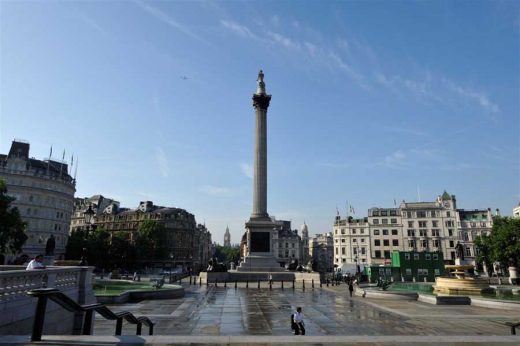
photograph © Nick Weall
Malcolm Reading, Search Director, and Chairman, Malcolm Reading Consultants, said:
‘The process chosen by the National Gallery is not a conventional design competition seeking design concepts but instead creates the opportunity for much more interaction ‒ something the Gallery values and we know architects appreciate. We welcome both national and international teams. They will need to be exceptional and the international teams will require a UK partner for stage two.’
The deadline for first stage responses is: 2pm GMT Thursday 18 March 2021. Details of how to enter are available at: competitions.malcolmreading.com/nationalgallery
This selection process is being run under the Competitive Procedure with Negotiation in accordance with UK procurement regulations.
National Gallery London
Dates built: 1832–38 (façade)
Architect: William Wilkins
Dates built: 1872-76 (Barry Rooms)
Architect: E. M. Barry
Address: Trafalgar Square, London WC2N 5DN, UK
Phone: 020 7747 2885
Opening hours: 10:00 am – 6:00 pm, check with operator
National Gallery Building by William Wilkins architect – entry stairs and portico on south frontage:
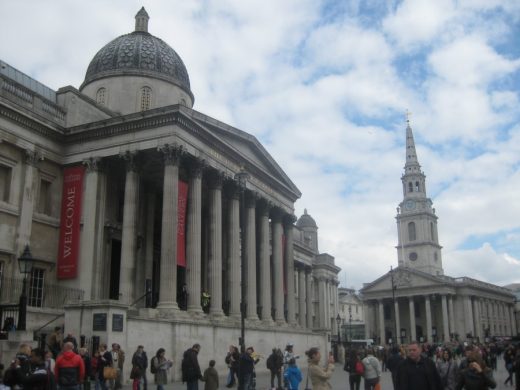
photo © Adrian Welch
This is an art museum on Trafalgar Square in central London. Founded in 1824, it houses a collection of over 2,300 paintings dating from the mid-13th century to 1900. The Gallery is an exempt charity, and a non-departmental public body of the Department for Culture, Media and Sport. Its collection belongs to the public of the United Kingdom and entry to the main collection is free of charge. It is the fifth most visited art museum in the world, after the Musée du Louvre, the Metropolitan Museum of Art, the British Museum and Tate Modern.
Sainsbury Wing – National Gallery Extension – interior view of long entry stairs flight:
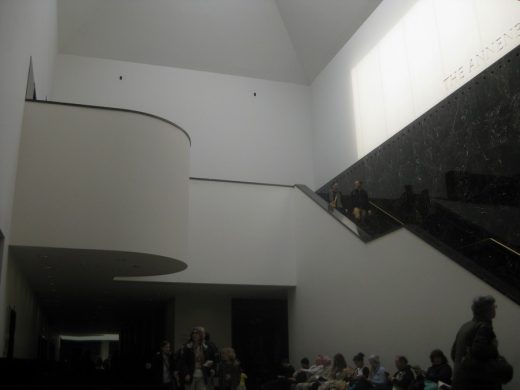
photo © Adrian Welch
The present building, the third to house the collection, was designed by architect William Wilkins from 1832–38. Only the façade onto Trafalgar Square remains essentially unchanged from this time, as the building has been expanded piecemeal throughout its history. Wilkins’s building was often criticised for its perceived aesthetic deficiencies and lack of space; the latter problem led to the establishment of the Tate Gallery for British art in 1897. The Sainsbury Wing, an extension to the west by Robert Venturi and Denise Scott Brown, is a notable example of Postmodernist architecture in Britain.
Soyurce: wikipedia
National Gallery architect : William Wilkins
Sainsbury Wing – National Gallery Extension, Trafalgar Square
Dates built: 1988-91
Design: Venturi, Scott Brown & Associates – Robert Venturi and Denise Scott Brown, based in the USA
National Gallery Extension design : Venturi Rauch Brown, architects
The architectural proposal by ABK – for the building that came to be known as the Sainsbury Wing – was infamously described by Prince Charles [May 30, 1984] as being “a monstrous carbuncle on the face of a much-loved and elegant friend”. This helped set up a polarisation in the UK between traditional and contemporary architecture styles and thinking.
ABK’s design for the extension was abandoned.
Sainsbury Wing – National Gallery Extension:
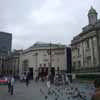
image © Adrian Welch
Location: National Gallery, London, England, UK
London Art Galleries
National Portrait Gallery
National Portrait Gallery
Saatchi Gallery, Chelsea
Design: Allford Hall Monaghan Morris
Saatchi Gallery
National Gallery Context
The public space in front of the building:
A building structure close by to the south west:
London Buildings
Contemporary London Architecture
London Architecture Designs – chronological list
Architecture Walking Tours in London by e-architect
Tate Modern Building
Design: Herzog & de Meuron Architects
Prince Charles Lecture – RIBA, May 2009
RIBA Awards 2006: West London – awarded
Comments / photos for the National Gallery London Architecture – Sainsbury Wing page welcome

